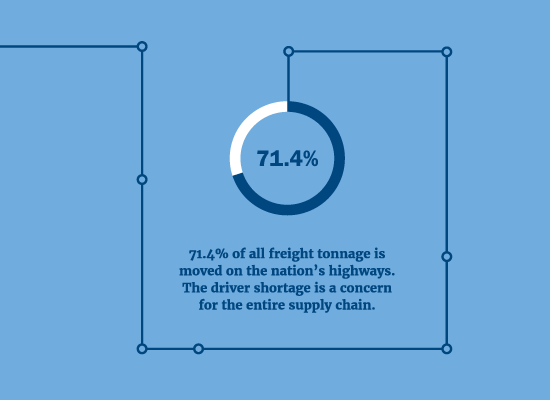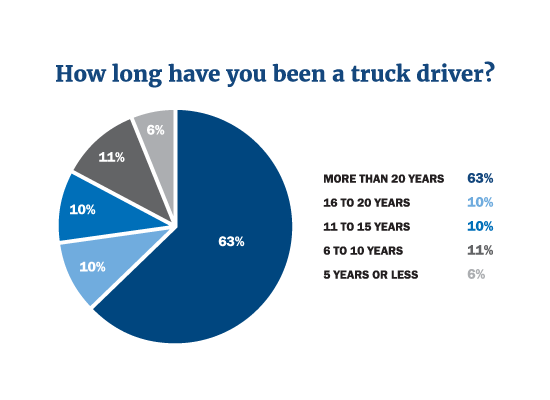
Driver shortages have been the talk of the transportation industry since 2005. When the 2008 recession impacted volume, the shortage was erased, only to grow again to an estimated 60,800 by 2018.
The reasons for the shortage are varied. Top among them is the high average age of current drivers.
The Bureau of Labor Statistics (BLS) reports the median age of all employed persons in the US is 42.2. The median age for drivers is 46.3. This aging of drivers indicates that as current drivers retire, fewer younger people are joining their ranks.
Two other demographics show room for growth within the ranks of drivers: women and minorities. In 2018, 6.6 percent of drivers were women and that number hasn’t changed much during the last two decades. Minorities made up 40.4 percent of drivers in 2018. While this is an increase from the 2001 level of 26.6 percent, there is still room for growth.
There is also the issue of quality vs. quantity. Even with the shortage of drivers, carriers that support a culture of safety are selective in hiring drivers who reflect the values of safety and professionalism.
The overall job market also has an impact. Low unemployment rates open up opportunities for a wide variety of career choices. With the demands of the truck-driving lifestyle, those who may have chosen this career are opting for other paths.
The graph below is from a Randall-Reilly survey the Commercial Carrier Journal (CCJ) conducted in 2019. It shows that the majority of current drivers have been behind the wheel for at least 20 years.
 A Randall-Reilly survey of drivers provides some interesting insights that connect to the driver shortage.
A Randall-Reilly survey of drivers provides some interesting insights that connect to the driver shortage.
When current drivers were asked why they thought fleets were struggling to hire additional drivers, pay rose to the top with respect as a close second.
Similarly, current drivers would change fleets for higher pay, with appreciation and choice of routes tying for second.
Current drivers also value equipment. The items most important to them are: special seat that improves comfort for long hours of driving, auxiliary power unit (APU), late model truck, larger sleeper and satellite radio.
Taking into account the causes of the shortage and the input of drivers, consider these ideas for easing your own driver shortage.
- Target the right drivers. Think about your most successful employees. What do they have in common? What makes these drivers different from others? Use this information to create a profile of your preferred candidate then target those people. Don’t spend time talking with potential drivers who will not be successful in your organization just to put a body behind the wheel. It may cost you in the long run.
- Put your successful drivers on the case. As with other professional occupations, drivers know other drivers. Incentivize your employees to recommend others like themselves. This can also help with retention. If you work with people you like, you are more inclined to continue wanting to work with them.
- Increase retention. Keeping your current drivers is more economical than hiring new ones. Talk to your drivers. Get their input on how to make things better. Take their concerns and advice seriously. Respect is a big issue with drivers. When they see you taking their concerns to heart and doing something about them, they will be more inclined to stay.
- Create mentorships. To increase the success rates of young and minority drivers, pair them with your most successful drivers. Let those with the most experience in your fleet bring along the newest members of the driving family.
- Work with a hiring firm. There are hiring and retention companies that specialize in the transportation arena. Use their connections and skills to help you reach your goals.
Sources: What Drivers Want – Special Report 2019 from Randall-Reilly and the Commercial Carrier Journal (CCJ) Truck Driver Shortage Analysis 2019 – American Trucking Associations